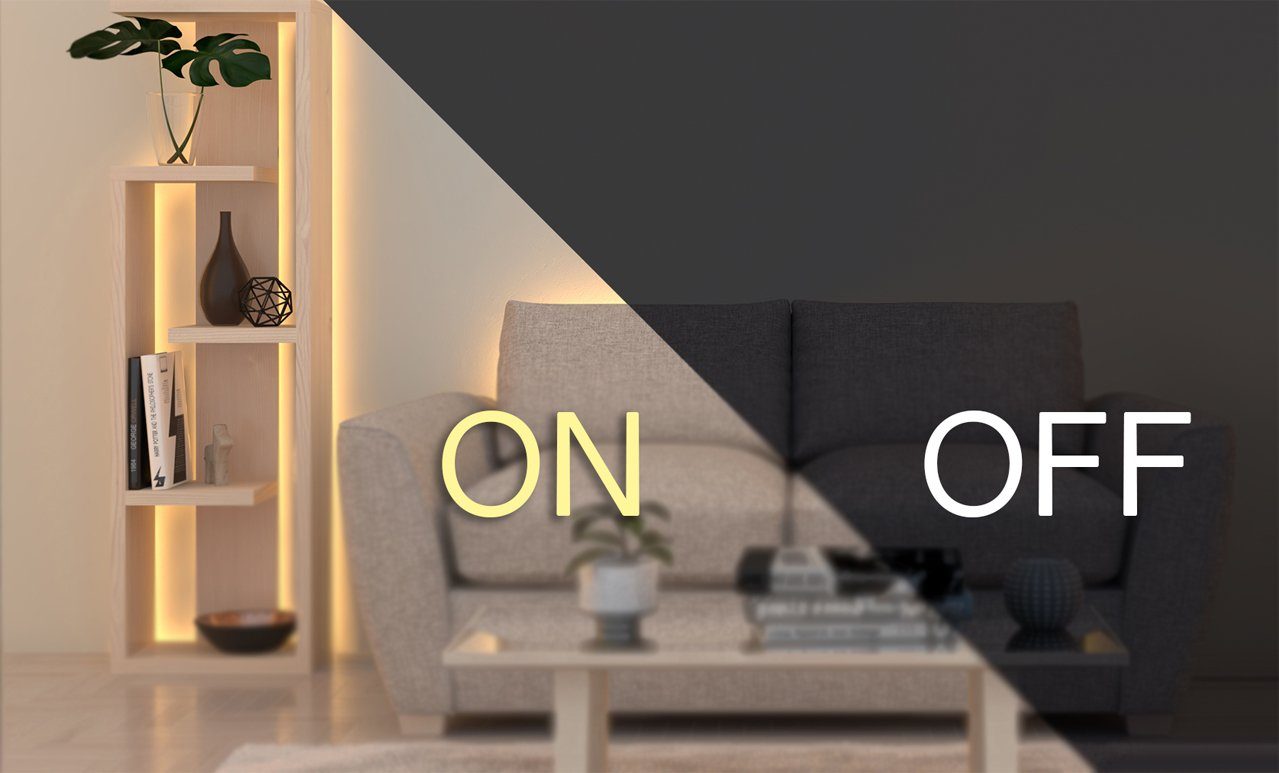It's the year 2020. We have self-driving cars, wireless communicators (okay, smartphones) in our pockets - and space-age, hyper-efficient LED strip lighting throughout your home that you ... need to unplug from the wall to turn off? Wait, really? Is this the best we can do?
Sure, LED lighting is great in a lot of ways (we mentioned efficiency already, but how about temperature, safety, cost, ease of installation...) but sometimes you just want those lights to be, well, not on. Maybe you're trying to sleep? Maybe you're not at home? Maybe you've just had corrective laser eye surgery and you can't handle bright lights for a while (now we're just bragging, past-people). The reasons are many - and thankfully, the means are many too. Below is a list of ways you can turn your LED strip lights off (and, of course, on also).
1) High voltage on/off switch.
Since LEDs run on low voltage DC electricity, they require a power supply (sometimes called a transformer or driver) to convert from your home’s high voltage AC. You can switch off this electricity before it gets to the transformer with a regular on/off switch – usually mounted in the wall like a light switch.
2) High voltage dimmer switch.
Go one step further and include dimming capabilities by using a compatible dimmer switch before your power supply (which will have to be a special dimmable version as well as being compatible with your dimmer switch). Modern dimmer switches offer smooth and high-quality dimming – and some offer control by remote, memory functions, and more.
3) EZDim
If dimmable power supplies and compatible switches sound like more hassle than they’re worth, the revolutionary EZDim dimmer switch might be for you. It combines a dimmer switch AND a power supply in one compact unit, meaning you don’t have to worry about compatibility, and installation becomes a breeze.
4) R110 low voltage remote control.
All the features of the dial dimmer and more, in the palm of your hand – in this room, that room, or any other room (conditions apply). The R110 uses RF control (instead of less reliable IR control), so the signal can pass through cabinet doors, walls, or other materials. The R110 features a handful of other goodies, too – including pre-set dimming levels and some neat effects too.
5) Our range of multicolor controllers (for RGB / RGBW strips).
This probably isn’t going to be news for anyone, but if you’re using any multicolor or specialty strips, the controller for those strips has an on/off button too, so you don’t have to close your eyes when you want some respite from all those dancing colors. As a bonus, you can use a high voltage on/off switch (1) or an in-line switch (4) before you get to the controller if you want – but don’t try combining RGB strips with anything else that dims (or you’ll experience flickering, erratic dimming, or poor color reproduction).
--
Whether you’re an enthusiast, a lighting expert or a lighting professional, there’s a variety of ways that you can turn your lights off (and on!) to match your needs. Need help choosing what’s right for you? Contact our expert customer service team at customerservice@hitlights.com!

